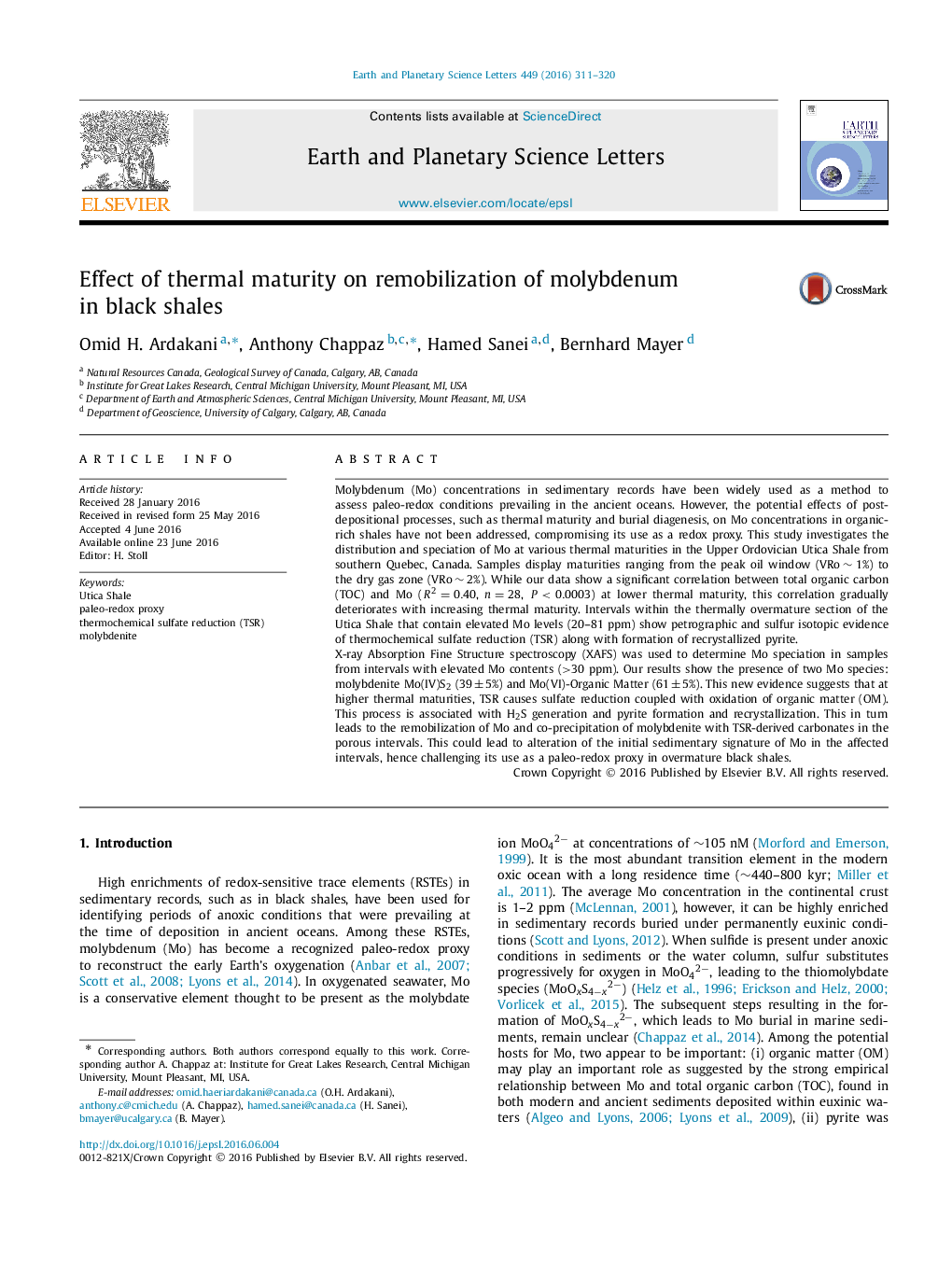| کد مقاله | کد نشریه | سال انتشار | مقاله انگلیسی | نسخه تمام متن |
|---|---|---|---|---|
| 6427401 | 1634707 | 2016 | 10 صفحه PDF | دانلود رایگان |
- Explore the effect of thermal maturity Mo enrichment and speciation in black shale.
- Assess the role of thermal sulfate reduction (TSR) during Mo remobilization.
- Identify two Mo species: i) molybdenite, and ii) Mo(VI)-OM in overmature samples.
- Discuss the consequences for the use of Mo as the paleo-redox proxy in black shale.
Molybdenum (Mo) concentrations in sedimentary records have been widely used as a method to assess paleo-redox conditions prevailing in the ancient oceans. However, the potential effects of post-depositional processes, such as thermal maturity and burial diagenesis, on Mo concentrations in organic-rich shales have not been addressed, compromising its use as a redox proxy. This study investigates the distribution and speciation of Mo at various thermal maturities in the Upper Ordovician Utica Shale from southern Quebec, Canada. Samples display maturities ranging from the peak oil window (VRoâ¼1%) to the dry gas zone (VRoâ¼2%). While our data show a significant correlation between total organic carbon (TOC) and Mo (R2=0.40, n=28, P<0.0003) at lower thermal maturity, this correlation gradually deteriorates with increasing thermal maturity. Intervals within the thermally overmature section of the Utica Shale that contain elevated Mo levels (20-81 ppm) show petrographic and sulfur isotopic evidence of thermochemical sulfate reduction (TSR) along with formation of recrystallized pyrite.X-ray Absorption Fine Structure spectroscopy (XAFS) was used to determine Mo speciation in samples from intervals with elevated Mo contents (>30 ppm). Our results show the presence of two Mo species: molybdenite Mo(IV)S2 (39±5%) and Mo(VI)-Organic Matter (61±5%). This new evidence suggests that at higher thermal maturities, TSR causes sulfate reduction coupled with oxidation of organic matter (OM). This process is associated with H2S generation and pyrite formation and recrystallization. This in turn leads to the remobilization of Mo and co-precipitation of molybdenite with TSR-derived carbonates in the porous intervals. This could lead to alteration of the initial sedimentary signature of Mo in the affected intervals, hence challenging its use as a paleo-redox proxy in overmature black shales.
Journal: Earth and Planetary Science Letters - Volume 449, 1 September 2016, Pages 311-320
